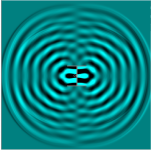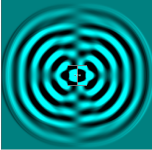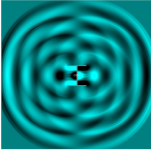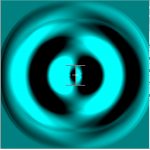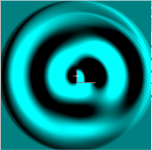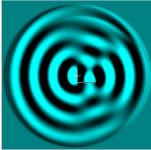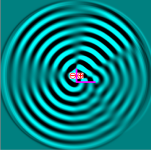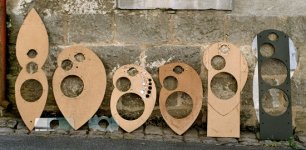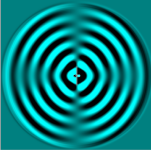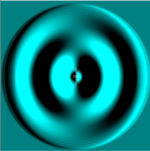Open Baffle Basics pt.3 - YouTube
The video above explains how a flat response is achieved by acoustic solutions. However he doesn't mention the effect on the polar response of this method. Has anyone tried this and/or done measurements?
The video above explains how a flat response is achieved by acoustic solutions. However he doesn't mention the effect on the polar response of this method. Has anyone tried this and/or done measurements?
Glad you brought this up. I've been wondering about it as well.
Might be better to post the same question over at audiocircle.com where most of the GR Research discussion takes place. I'm not sure if Danny even looks at this forum.
Might be better to post the same question over at audiocircle.com where most of the GR Research discussion takes place. I'm not sure if Danny even looks at this forum.
I would do it for you myself, but I've been banned over there for too many challenges to the cable manufacturers for all of their snake oil posts.
So I can still read the forum, but I'm not allow to post anymore.
So I can still read the forum, but I'm not allow to post anymore.
Last edited:
Thanks for the offer, yes, I recall you saying. I've just joined. Logically the answer is probably quite straight forward, the response will be skewed accordingly I would imagine. It would be interesting to see measurements though.
I’m expecting that there will be some sort of tradeoff.
While adding wings to an OB may help to flatten the FR curve it almost certainly has to affect the polar response. Particularly if the wings are significantly unequal in length as they are in these GR Research designs
So now you are not going to get equal cancellation for lower frequencies on both sides of the baffle as you do without wings. That means a certain amount of low frequency energy will be emitted to the side and consequently reflect off the side walls. How that translates into room response is the now the question.
Notice that some very well respected OB speakers do not even attempt to use this approach. Notably Spatial Audio Lab speakers have no wings at all. Nor do planars like Magnepan.
While adding wings to an OB may help to flatten the FR curve it almost certainly has to affect the polar response. Particularly if the wings are significantly unequal in length as they are in these GR Research designs
So now you are not going to get equal cancellation for lower frequencies on both sides of the baffle as you do without wings. That means a certain amount of low frequency energy will be emitted to the side and consequently reflect off the side walls. How that translates into room response is the now the question.
Notice that some very well respected OB speakers do not even attempt to use this approach. Notably Spatial Audio Lab speakers have no wings at all. Nor do planars like Magnepan.
Done at four different frequencies, and perhaps seeing a pattern?
Attachments
But this is quite different from what scottjoplin brought up to begin with. He was asking about asymmetrical L configurations. This is a symmetrical U box. Would not expect the same acoustic patterns from them both.
Indeed. Ok, this is a plain L.
It seems to follow the idea that if you try to deal with a directional issue like diffraction only focussing on one direction, you'll pay for it on other axes.
It's my view that a design should start out as symmetrical by default, unless/until proven otherwise, and notwithstanding a need to produce asymmetrical directivity as that's a different matter.
It seems to follow the idea that if you try to deal with a directional issue like diffraction only focussing on one direction, you'll pay for it on other axes.
It's my view that a design should start out as symmetrical by default, unless/until proven otherwise, and notwithstanding a need to produce asymmetrical directivity as that's a different matter.
Attachments
In the video that Scott references in the first post the main focus is on frequency response. In fact, polar response is not not dealt with at all in it.
So the real question here is whether optimizing one of the performance characteristics compromises a different one. There might not be a single 'right' answer, and if that's true then an understanding of the trade-offs would be valuable to have.
So the real question here is whether optimizing one of the performance characteristics compromises a different one. There might not be a single 'right' answer, and if that's true then an understanding of the trade-offs would be valuable to have.
It's all about the same energy, it's just being distributed differently. As a result, I think the default position when faced with diffraction has to be to do nothing.. Of course, it's best to try to understand all that it does, so that any changes are justified.
So, are you saying that OB speakers will sound the same at the listener's position, assuming it's far field, not near field, regardless of whether wings are utilized or not? That it's the same sound energy the listener receives just getting there by different paths. I'm not really clear on what you are saying.
So now you are not going to get equal cancellation for lower frequencies on both sides of the baffle as you do without wings. That means a certain amount of low frequency energy will be emitted to the side and consequently reflect off the side walls. How that translates into room response is the now the question.
The longer wings will be more visible to higher frequencies. I see two other factors, there may be more, the drivers are going to become more directional as frequency increases and there will be reflections off the inside of the wings.
Indeed. Ok, this is a plain L.
Thanks Allen, those sims look more of a mess than I expected, I presume the wing is at the bottom of the images?
In the video that Scott references in the first post the main focus is on frequency response. In fact, polar response is not not dealt with at all in it.
I've had a reply at audiocircle that focuses on that. In the first video of the series, that I didn't link to, Danny explains the importance of the nulls.
In the most fundamental of ways, yes. It is considerably more complex in practice. I'm talking about a 'default' value because on the other hand, some will look at the one axis and attribute too much to it, hence the need to make this distinction and not get lost in the forest.That it's the same sound energy the listener receives just getting there by different paths. I'm not really clear on what you are saying.
As a clue to how complex it can be, yes the direct sound does have a higher weighting in importance, but use this to justify ignoring other aspects at your own peril. Diffraction carries a different weighting due to its nature as a secondary source, even though some like to measure it together to get a single response measurement. Thirdly, the very existence of the diffraction feeding from only a portion of the main source's radiation pattern shows that it is going to create its own idea of directivity (higher order modes).
Using randomised baffle shapes is going to distribute these modes differently in space, not make them go away. Using a single response measurement is too much of an oversimplification to properly make a judgement on what is happening.
Polar response is strongly dependent of the relations of SD, lambda and D. Especialy also dependent from the relation D/SD. You might read this, chapters A and B, to understand:
Electro-acoustic models
In my first, enthousiastic and seminaive days of dipole building I thought it would be feasible to tailor a desired frequency response out from a decent baffle shape. And I tried. And succeeded. But only for one point in space...
A.jpg
Using asymmetric shapes and even perforations/openings in the baffle, I managed to "cut out" a perfect BUT 2nd order response for a distinct midwoofer. Perfect in terms of +- 0.5dB ripple. No kidding. But I was stoppend by the laws of physics. The polar response was a perfect mess, and I understood why later, after having read the infos in the aforementionned link.
1. In order to get a symmetric polar response, the baffle shapes must be symmetric. This is the case in the video. Asymmetric baffle shapes lead to asymmetric polars.
2. The polar response is only homogen up to a distinct frequency, dependent from f (or lambda), SD (surface fo the driver) and D (baffle width), as described in the aforementionned link. Above this frequency, the curves diverge, and the polar response is no more homogen. The transition region is marked by the first max. shoulder of a specific response curve as plotted in the link.
So, with a dipole and looking for a correct polar response, the driver must not be driven above a distinct frequency. This is true for any given shape of a dipole construct, W's, L's, M's, H's flat ones... Reversly spoken, every dipole has a perfect polar response up to it's specific limit.
And dhe smaller the baffle, and the smaller the driver, the higher this limiting frequency gets. This is why many dipole builds use naked speakers. In order to get as high as possible good polar response. But there is no lunch for free: Small structures in open baffles come at the price of low sensitivity for lower frequencies.
Electro-acoustic models
In my first, enthousiastic and seminaive days of dipole building I thought it would be feasible to tailor a desired frequency response out from a decent baffle shape. And I tried. And succeeded. But only for one point in space...
A.jpg
Using asymmetric shapes and even perforations/openings in the baffle, I managed to "cut out" a perfect BUT 2nd order response for a distinct midwoofer. Perfect in terms of +- 0.5dB ripple. No kidding. But I was stoppend by the laws of physics. The polar response was a perfect mess, and I understood why later, after having read the infos in the aforementionned link.
1. In order to get a symmetric polar response, the baffle shapes must be symmetric. This is the case in the video. Asymmetric baffle shapes lead to asymmetric polars.
2. The polar response is only homogen up to a distinct frequency, dependent from f (or lambda), SD (surface fo the driver) and D (baffle width), as described in the aforementionned link. Above this frequency, the curves diverge, and the polar response is no more homogen. The transition region is marked by the first max. shoulder of a specific response curve as plotted in the link.
So, with a dipole and looking for a correct polar response, the driver must not be driven above a distinct frequency. This is true for any given shape of a dipole construct, W's, L's, M's, H's flat ones... Reversly spoken, every dipole has a perfect polar response up to it's specific limit.
And dhe smaller the baffle, and the smaller the driver, the higher this limiting frequency gets. This is why many dipole builds use naked speakers. In order to get as high as possible good polar response. But there is no lunch for free: Small structures in open baffles come at the price of low sensitivity for lower frequencies.
Attachments
Last edited:
^ Thanks Daihedz for a good post.
This is the straight baffle. Performance remains to a higher frequency, presumably due to the lack of baffle clutter. The nulls are consistent.
The higher order modes are also relativly simple, which has it's own story to tell.
They were briefly mentioned.. but if we're to say they are an important part of the design, they should stay where they are vs frequency.explains the importance of the nulls.
This is the straight baffle. Performance remains to a higher frequency, presumably due to the lack of baffle clutter. The nulls are consistent.
The higher order modes are also relativly simple, which has it's own story to tell.
Attachments
In my first, enthousiastic and seminaive days of dipole building I thought it would be feasible to tailor a desired frequency response out from a decent baffle shape. And I tried. And succeeded. But only for one point in space...
Thanks for your post and I concur. Regards the above, at a single listening position in a small room, listening near field, might the downsides be less of an issue? Danny's concern seems mainly with the width of the baffle and if the (large) wing was on the inside edge there would still be a partial null towards the sidewalls. Although, looking at Allen's sims there are null/dips more on axis too.
Last edited:
- Home
- Loudspeakers
- Multi-Way
- What is the polar response of "L-frame" OB speakers
